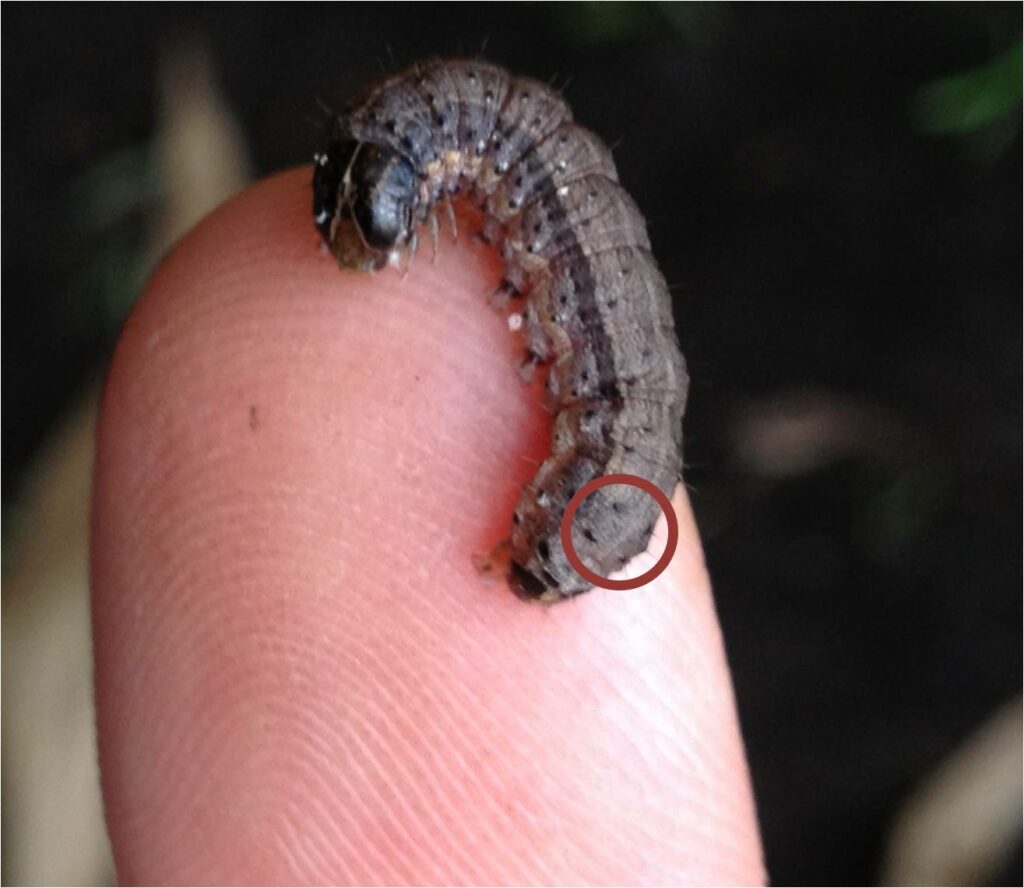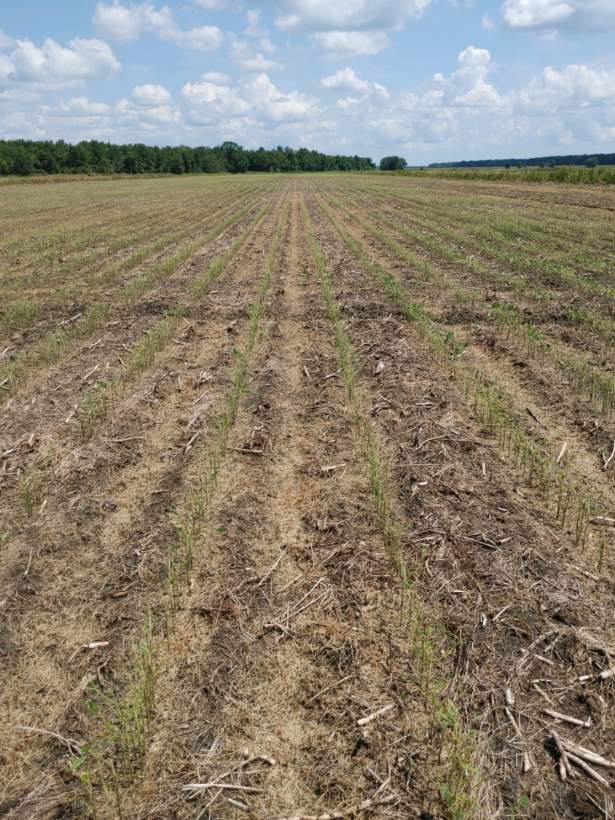Check Small Soybeans for Fall Armyworm
go.ncsu.edu/readext?815194
en Español / em Português
El inglés es el idioma de control de esta página. En la medida en que haya algún conflicto entre la traducción al inglés y la traducción, el inglés prevalece.
Al hacer clic en el enlace de traducción se activa un servicio de traducción gratuito para convertir la página al español. Al igual que con cualquier traducción por Internet, la conversión no es sensible al contexto y puede que no traduzca el texto en su significado original. NC State Extension no garantiza la exactitud del texto traducido. Por favor, tenga en cuenta que algunas aplicaciones y/o servicios pueden no funcionar como se espera cuando se traducen.
Português
Inglês é o idioma de controle desta página. Na medida que haja algum conflito entre o texto original em Inglês e a tradução, o Inglês prevalece.
Ao clicar no link de tradução, um serviço gratuito de tradução será ativado para converter a página para o Português. Como em qualquer tradução pela internet, a conversão não é sensivel ao contexto e pode não ocorrer a tradução para o significado orginal. O serviço de Extensão da Carolina do Norte (NC State Extension) não garante a exatidão do texto traduzido. Por favor, observe que algumas funções ou serviços podem não funcionar como esperado após a tradução.
English
English is the controlling language of this page. To the extent there is any conflict between the English text and the translation, English controls.
Clicking on the translation link activates a free translation service to convert the page to Spanish. As with any Internet translation, the conversion is not context-sensitive and may not translate the text to its original meaning. NC State Extension does not guarantee the accuracy of the translated text. Please note that some applications and/or services may not function as expected when translated.
Collapse ▲Fall armyworm is a sporadic outbreak pest that doesn’t overwinter in North Carolina. Populations migrate here as early as May, but really crank up as the summer progresses. We often find fall armyworm in late-planted non-Bt corn. This year they are widespread in grass, hay, and food-plots (duck impoundments planted to millet, for example).
We have also had some serious issues in soybeans, which is unusual.
Fall armyworm has two strains- the rice/grass strain, which prefers grasses, and the corn strain, which prefers corn and soybeans. The last year we have had the corn strain widespread in soybeans was 2011. This year (2021), we have had at least two soybean fields in North Carolina that have been completely defoliated. Both of these fields were near wildlife refuges toward the coast and were late-planted or double-cropped. Likely these were grass strain fall armyworms that developed on grasses (weeds and volunteer wheat), consumed the grass, and moved into the soybeans. In the past, the grass strain has been easily controlled with pyrethroids. However, this year in the Midsouth, pyrethroids have provided poor control. Pyrethroids do not work well for the corn strain.
All soybeans should be carefully scouted for pests throughout the growing season. Pay special attention to double-cropped beans and check for fall armyworms that might be targeting volunteer wheat or weeds. Use a sweep net and pay attention to fields where you are catching more than 5 in 15 sweeps or where defoliation is happening. To be on the safe side, assume that pyrethroid control will be poor and use a caterpillar-specific insecticide. The following are cost-effective options that have worked in the Midsouth:
- Intrepid at 4oz (advantage- good residual)
- Diamond at 6oz (advantage- good residual)
- Dimilin at 4oz (use only if larvae are small since it takes time to work)
- Orthene at 0.5 to 0.75lbs (advantage- will pick up other non-caterpillar pests; disadvantage- can flare pests behind the spray such as soybean looper)
Control will be better on smaller larvae, especially since many of these insecticides are insect growth regulators. These insecticides can be tank mixed to capitalize on some of their advantages.
If fall armyworms have already started to cause defoliation in your soybean crop, you may be wondering how much defoliation you can tolerate without irreversible yield damage. The ability of your soybeans to recover depends on both the soybean growth stage and the severity of defoliation. Soybeans are more sensitive to defoliation in the reproductive than vegetative stages. At full-season planting dates, soybeans in the vegetative growth stage can withstand 60% node removal before yield loss begins to occur but only 20% in the early reproductive growth stages (Conley et al., 2009). However, while soybeans can typically withstand considerable defoliation in the vegetative growth stages before yield loss begins, previous research indicates that soybeans are more susceptible to yield loss from defoliation as planting date is delayed (Thrash et al., 2021). The North Carolina double crop fields affected so far in 2021 will have limited ability to recover from defoliation because flowering will occur soon limiting subsequent vegetative growth, especially in determinate varieties.




